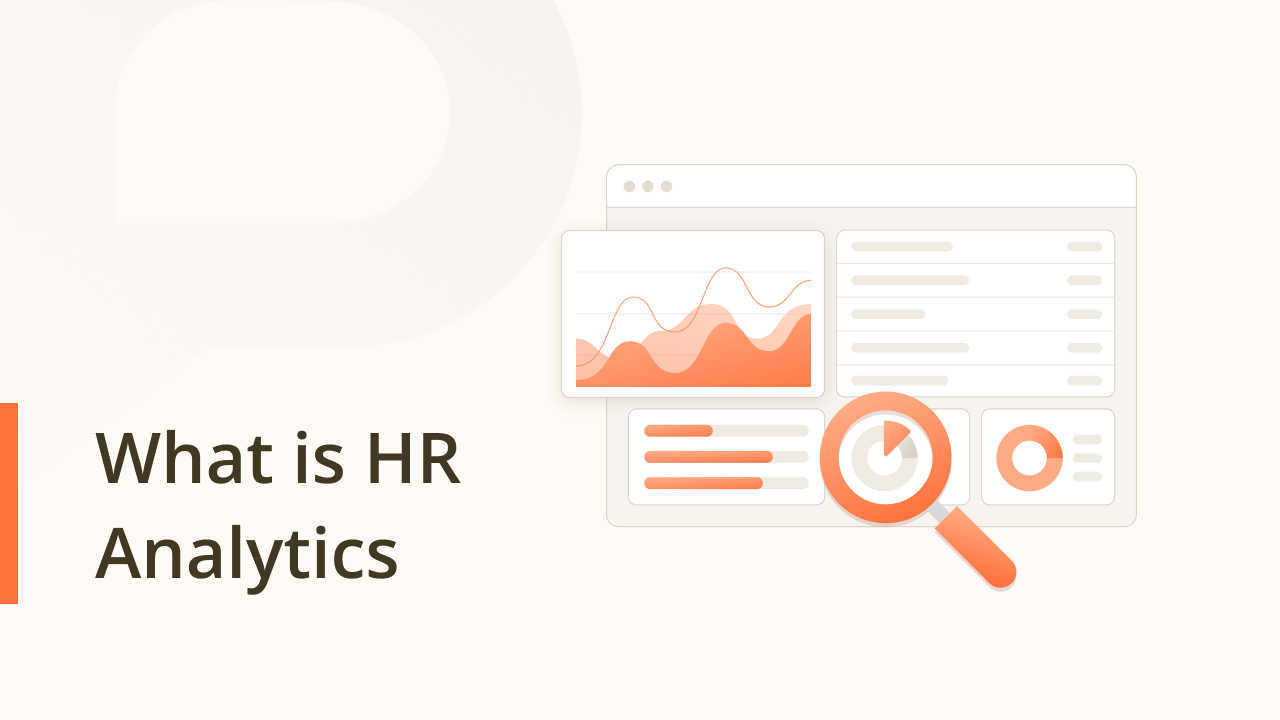Table of Contents
showSpending too much on recruitment, payroll or global HR?
We help you find the Best Providers at the lowest cost.
Human Resource (HR) analytics is the sophisticated practice of collecting, analyzing, and applying data related to HR functions to enhance workforce performance and contribute to organizational goals. By leveraging this data-centric approach, HR professionals can pinpoint patterns, predict outcomes, and effectively guide strategic decisions that were once primarily influenced by intuition and personal experience.
Employing HR analytics involves using key performance indicators and metrics that reflect an organization’s health. This includes analyzing turnover rates, time to hire, employee satisfaction, and other essential aspects directly impacting business success. The synthesis of this data is intended to lead to better-informed decisions and, by extension, a more productive and satisfied workforce.
Key Takeaways
- HR analytics is integral in linking HR data with business outcomes.
- It includes a set of key metrics that measure crucial aspects of workforce management.
- Effective HR analytics implementation can significantly inform decision-making and enhance organizational performance.
Fundamentals of HR Analytics
HR Analytics is essential for any organization aiming to optimize its workforce performance. This section delves into its core aspects, including its goals and evolution.
Definition and Purpose
HR Analytics, often termed people analytics or workforce analytics, refers to collecting and analyzing employee performance and behavior data. Its primary purpose is to provide insights that inform strategic HR decisions and managerial practices, directly contributing to achieving business objectives. Examples of metrics used in HR Analytics include employee turnover rates, training effectiveness, and time-to-hire, which help organizations enhance staff retention, talent development, and recruiting efficiency.
Evolution of HR Analytics
HR Analytics has significantly evolved from simple descriptive analytics, which deals with what has happened in the past, to more sophisticated predictive and prescriptive forms. Initially focused on understanding readily available data, advanced HR analytics now involves forecasting future trends and prescribing actionable strategies. It has shifted from basic reporting of HR metrics to a more complex analysis that creates a deeper understanding of how human capital impacts company performance. This progression has dramatically improved the strategic role of HR within organizations.
Key Metrics and Data Sources
In HR analytics, precise metrics provide insights into workforce dynamics, while robust data collection lays the foundation for actionable analysis. The following subsections delineate the pivotal metrics employed and the data collection methodologies that support them.
Common HR Metrics
- Cost per Hire – the total cost associated with the recruitment process divided by the total number of hires.
- Time to Hire – the duration from when a job opening is posted to when an offer is accepted.
- Quality of Hire – often assessed through performance appraisals, turnover rates, and hiring manager satisfaction ratings.
- Employee Net Promoter Score (eNPS) gauges employee loyalty based on their likelihood of recommending the organization as a place to work.
- Absenteeism Rate – the frequency and pattern of unscheduled absences.
- Employee Growth Rate – the rate at which employee skills and competencies improve.
- Employee Turnover Rate – the proportion of employees who leave the company in a given period.
- Salary Averages – the mean salary of employees within the organization or in specific roles.
The data from these metrics offers employers insights into operational efficiencies and areas needing improvement.
Data Collection Techniques
Effective HR analytics is contingent upon systematic data collection techniques. Organizations obtain data through a variety of means:
- Surveys and Questionnaires – collecting qualitative data directly from employees.
- HR Information Systems (HRIS) are software that manages employee information and HR policies.
- Performance Management Software – applications that track and analyze employee performance data.
- Integration with Financial Systems – to correlate HR initiatives with financial outcomes.
By leveraging these diverse sources, organizations can assemble a comprehensive data set supporting a holistic workforce management approach.
Implementation Strategies
Effective implementation of HR Analytics is crucial for leveraging data-driven decision-making in human resources. This involves integrating analytics with HR systems and fostering an analytics culture within the organization.
Integration with HR Systems
Integrating HR Analytics involves connecting analytic tools with existing HR systems to streamline data extraction and analysis. This connection allows for real-time analysis of HR metrics, such as time to hire and retention rates, to enhance business performance. Organizations often adopt a step-by-step approach when integrating HR Analytics to align data insights with strategic objectives.
Developing an Analytics Culture
Creating an analytics culture requires the organization to prioritize data-driven decision-making. They need to invest in training for HR professionals to interpret and apply data insights effectively. To implement people analytics, it’s essential to start by defining the HR problems that need solutions and involve all stakeholders in embracing an analytics mindset.
Challenges and Future of HR Analytics
The landscape of HR Analytics is rapidly evolving, facing significant challenges while advancing toward a future where predictive analytics and artificial intelligence (AI) play pivotal roles.
Data Privacy and Ethics
In the domain of HR Analytics, the issue of data privacy poses a substantial challenge. Organizations must navigate complex regulations like the General Data Protection Regulation (GDPR). They must ensure that personal employee data is collected, stored, and analyzed with the utmost ethical consideration.
Predictive Analytics and AI in HR
Integrating predictive analytics and AI in HR transforms how organizations forecast and shape workforce trends. It extends from improving recruiting strategies to enhancing employee engagement. However, this progression requires HR professionals to develop data science and analytics competencies to fully utilize advanced AI tools effectively.


